I’m casting off! The longboat is packed with provisions, the crew are aboard, the shore is receding… OK enough nonsense, here’s my first yarn!
The task for this wool is to go fine. Fine not meaning skinniest yarn, but yarn from the wool with the skinniest individual fibres. What better than to use the finest wool I own – indeed, the finest 100% wool I have ever seen in person.
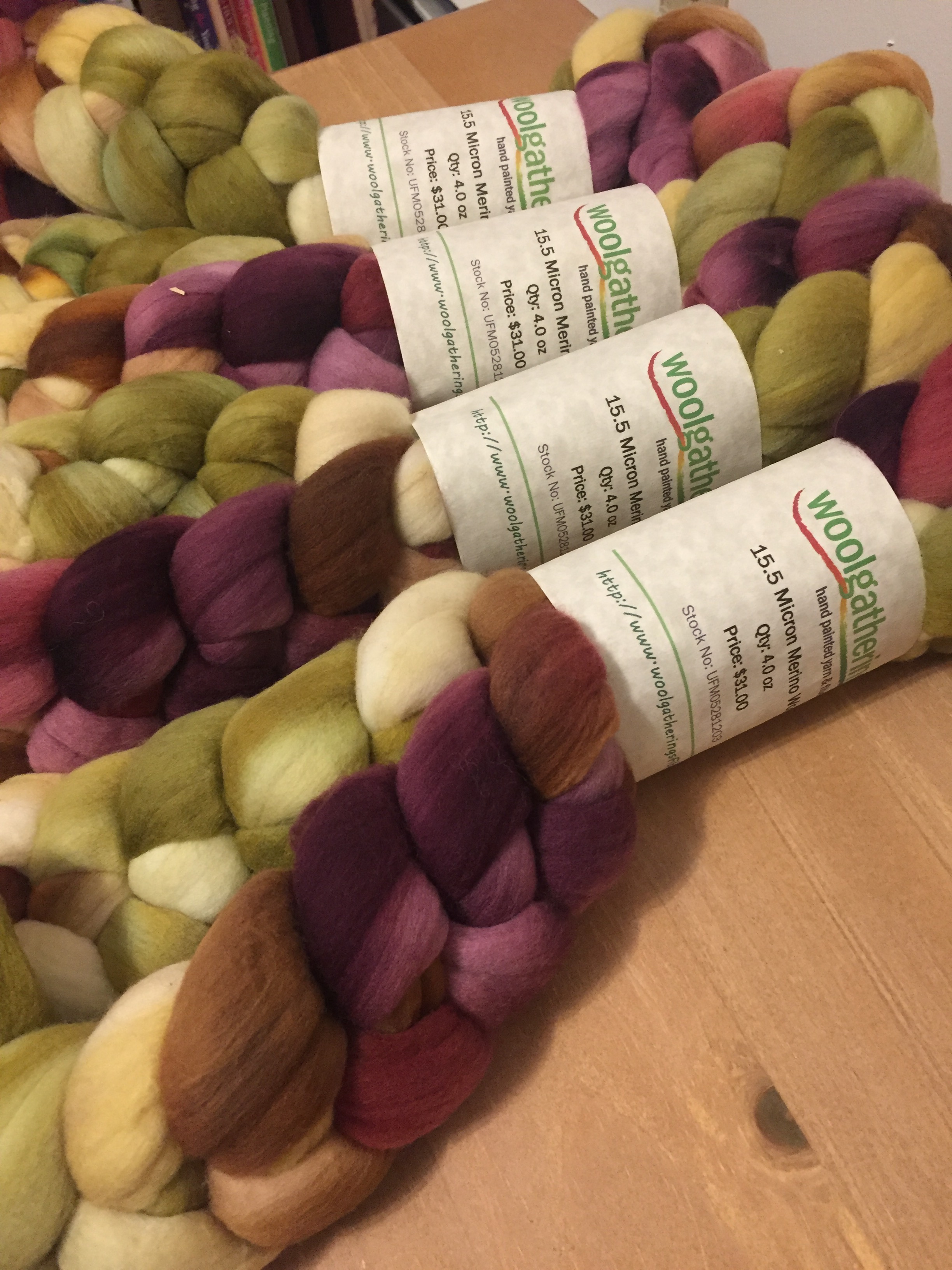
My mother, who I think is responsible for gifting me at least half of the fibre-related products I own, gave me these braids as a birthday present in 2012. At least, I think it was 2012. Maybe it was 2013. I had spun some BFL from the dyer, Woolgatherings, and enjoyed it so much that she thought I’d like a sweater quantity from the same dyer. But she ordered it on 15.5 micron Merino, presumably because it’s really nice.
Problem was, even though I adored the colorway, I was completely intimidated by the fibre. It was so soft I was afraid to touch it; the scales on my dry hands seemed to mess it up. At the time I wasn’t ready for a big spin, so it sat… and sat… and sat. It was so nice, shouldn’t I spin it fine (meaning a skinny yarn)? But spinning a pound of fiber into fine yarn has been, and remains, a project out of my reach.
Looking at it again, I realized, why do I have to spin it fine? I know now that unless I go for fingering weight, one lb is not going to be a sweater quantity for me. But why not a vest? A gorgeous multi-color vest may not be a fine shawl, but I could spin it in a way to be relatively sturdy, and it’d be better than letting it sit on my shelf.
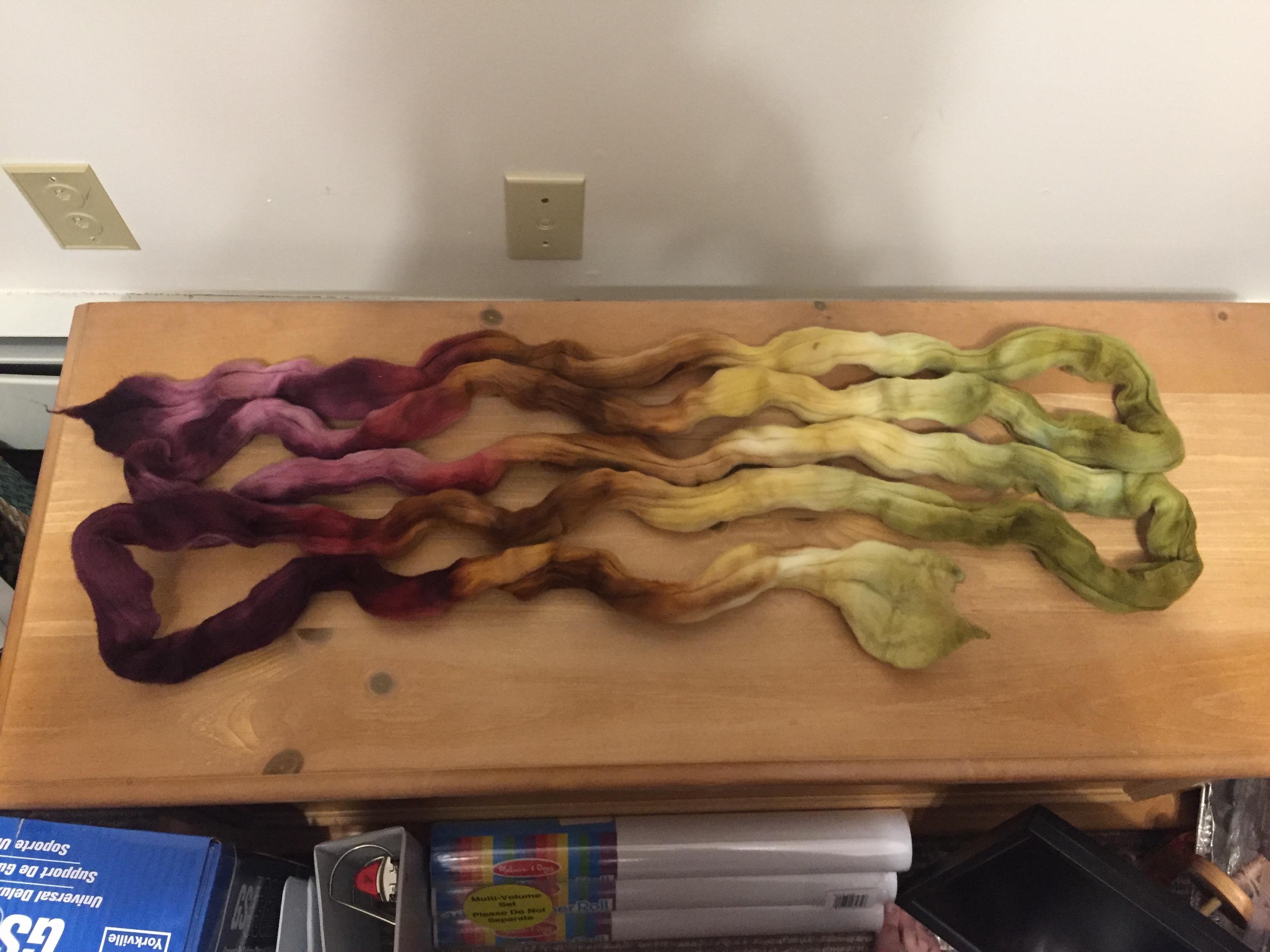
So for this sample I had two goals. First, Since it’s a sample from a larger quantity, I’m aiming for the yarn I want to one day spin the whole amount into: a 3-ply in the DK- to worsted-weight range. Second, I really wanted to put lots of twist into it. I’ve seen some really sexy handspun samples of very fine wools with really high twist angles, and they look sprongy and delicious. How much twist could it handle and still be wonderful, to make the most of that lovely crimp?


First things first. In her latest video for this SAL (I’d link it, but it’s Patreons only right now), Rachel showed how you can use a handcomb to test the staple length of your top. My handcombs are thoroughly misplaced right now, but I do have… a comb! I used a haircomb to pull off some lengths, and it appears the average staple length is about 3″.
Next, this poor fibre needed some airing after being braided up on a shelf for so long. I took apart one braid, fluffed it out, and let it air for a couple of days. It came apart just beautifully, and you can see many lines where it’ll be easy to split. When I spin the whole quantity, I’ll do this to all the braids, and also run a steamer over it so the crimp can come back to life again a little bit.
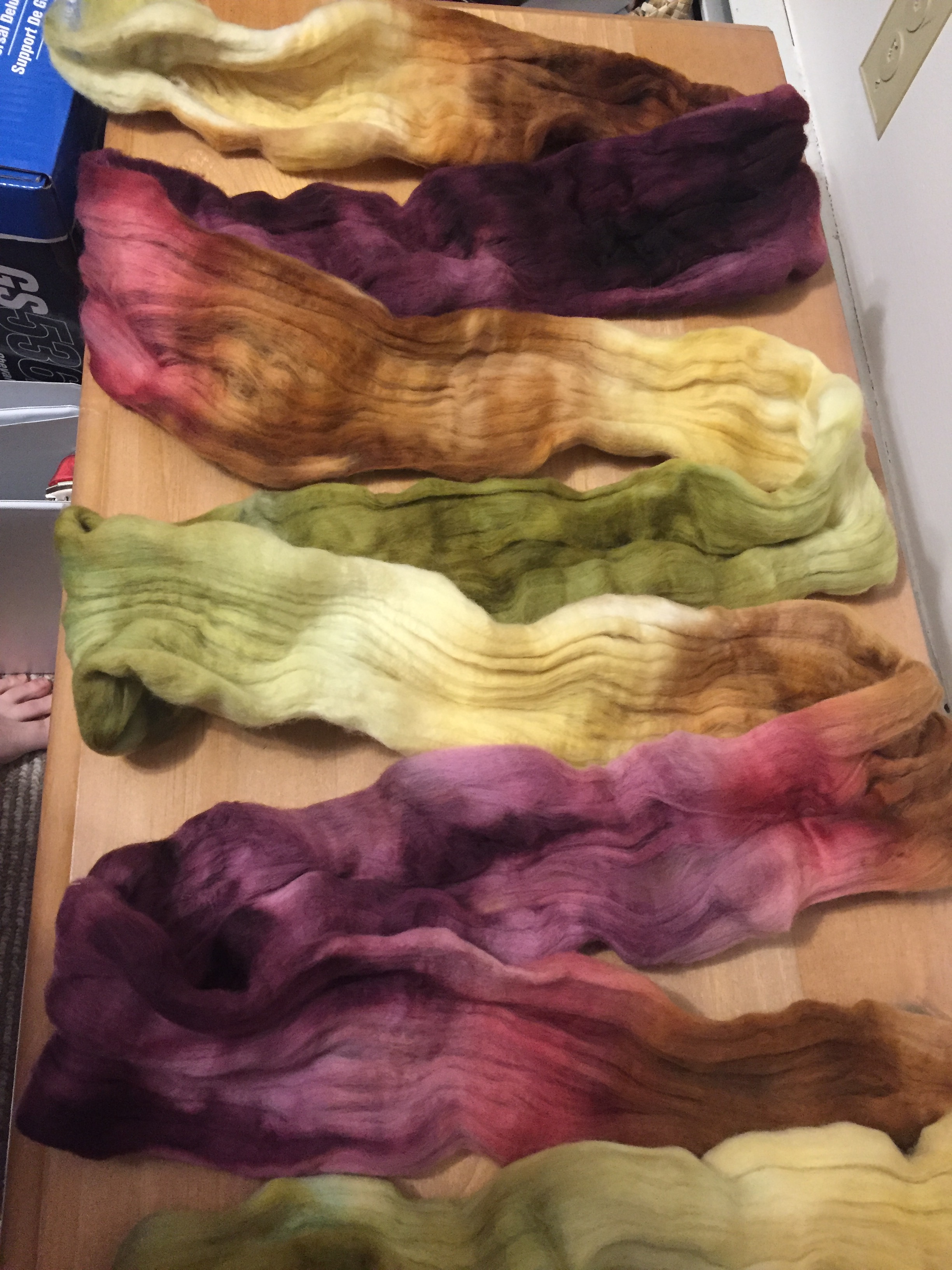
I stripped off a quarter of the braid, keeping exactly one ounce. I then stripped that quarter into six strips, which was a little too much. This is a small lesson, but I need to pay attention when stripping that I get it into more consistent strips. When stripping this much, predrafting isn’t really necessary, but if the strips aren’t the same size, drafting isn’t going to be quite as automatic. Maybe it’s fine (meaning OK) though; I got the hang of it by the end of the ounce.

It takes some time to make a sample card, but if I want to spin this whole thing one day, it might be a year or two, so I need to keep good notes. In addition to the finished sample and swatch I made, this card has singles, plyback test, staple length test, and a wee butterfly of unfinished final yarn.
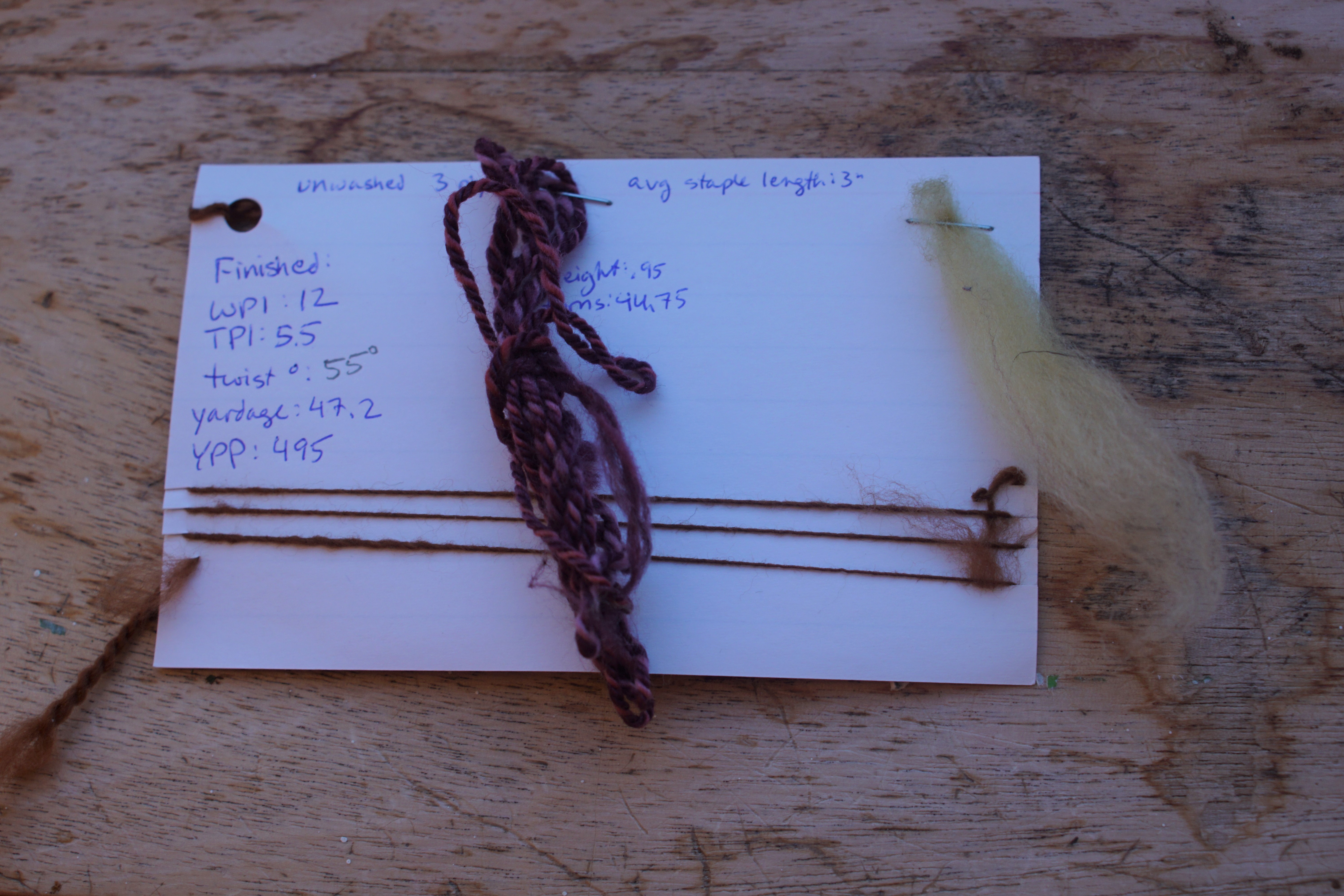
I spun a bit before really committing, but it seemed like I couldn’t consistently get it any thicker than 30 WPI, so I just went with that. I had heard somewhere that when spinning a 3-ply, you should spin your singles to a WPI that’s half of your desired final WPI. Turns out in this case, that’s not true. Could be that I misunderstood, or that it depends on the fiber and amount of twist, but in my case each ply was consistently around 30 WPI and made a 12-WPI 3-ply. I guess you just have to learn your own numbers, because everyone measures a little differently.

I made a traditional 3-ply. I wanted to mix up the colors to see what that looks like; I might decide to chain ply the eventual yarn, but that’s less of a guessing game. I spun Z twist at 15:1, drafting about 1.5″ per treadle. That was about the most twist I could put into it; any more and it started corkscrewing at that thickness. I then plied S twist at 11.5:1, about 2″ per treadle. Soak and four snaps to finish.
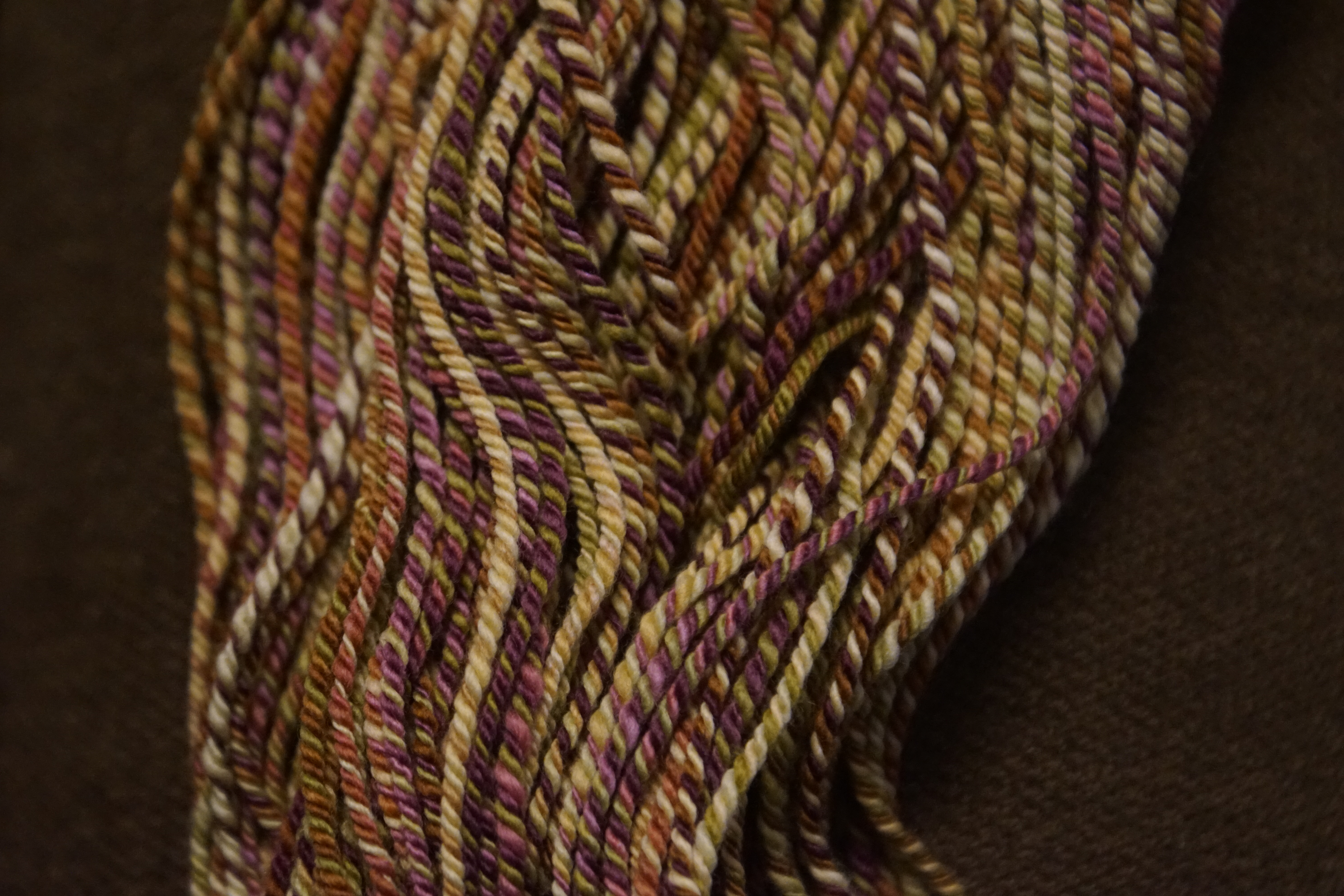
The finished yarn was everything I hoped. It was perfectly balanced. 12 WPI, 5.5 TPI, 55 degrees of cushy wushy twist, elastic and sprongy, still very soft. Final YPP was 794 – definitely enough for a vest for me (or a sweater for Naomi; she was eyeing up the fibre pretty hard while I worked.)

I wound half of it off to make a swatch. I used US 6s and 7s, which produced respectively a firm worsted weight gauge (21 st/4″) and a more relaxed aran weight gauge (18 st/4″). The latter you can see light through if you hold it up; the former you can’t. Either would be good for different projects, depending on what I wanted.

What did I learn? Be careful how you strip! (Insert wink wink nudge nudge joke here.) Also, if worsted weight, worsted-spun yarns are what I want to spin, my wheel can so handle that. It can easily max out the potential twist of even the finest yarns, if this type of spinning is what I want to do. To learn more, I’ll have to compare it to my next spins!
Probably the most important thing I learned is that I’m ready to stop being intimidated by wool that’s “too nice.” I think I knew I was ready to get over that, but it’s nice to have evidence.
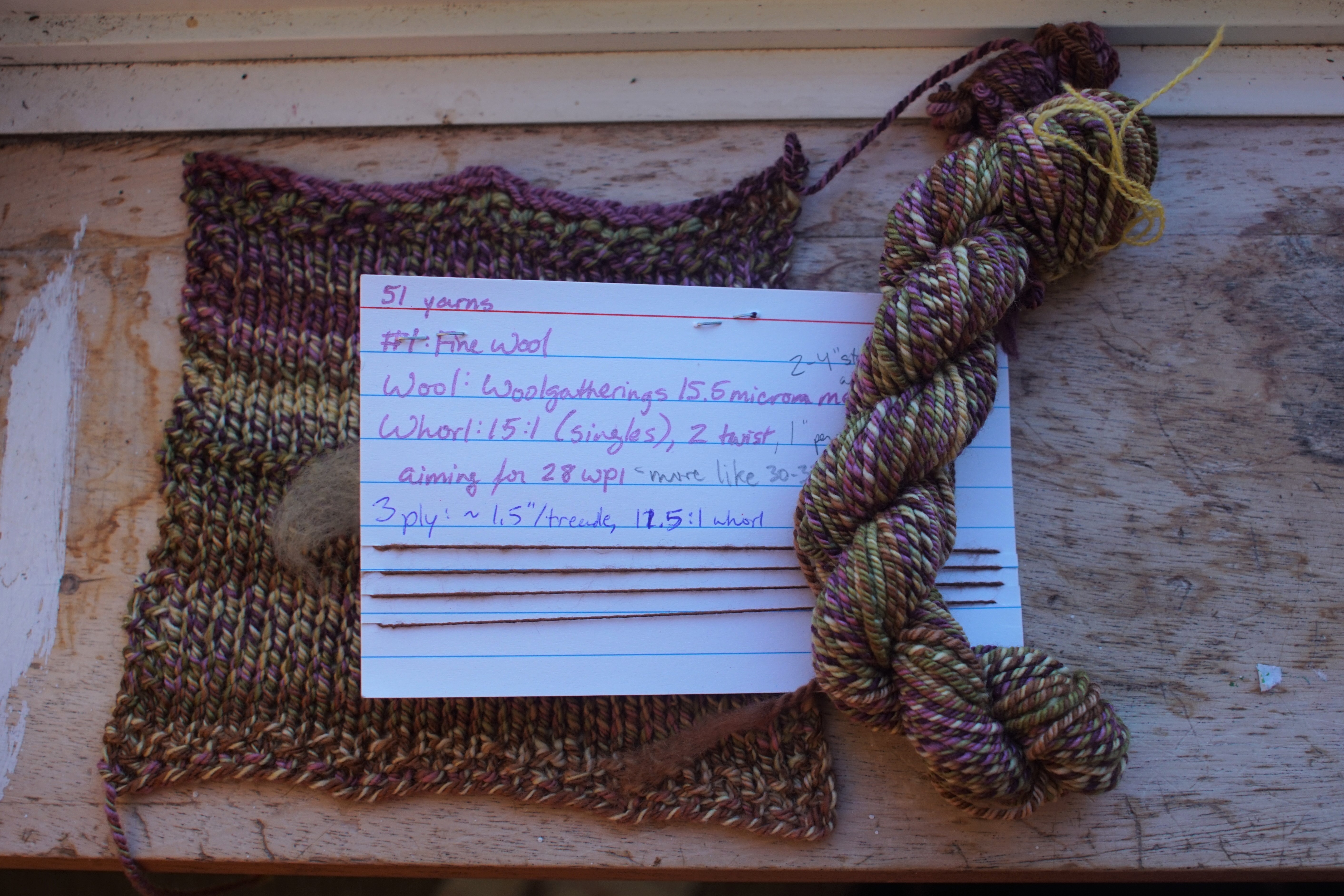
I’m still undecided if I want to spin the whole quantity like this. If I’m going to do it any time soon, I would say definitely yes; this would be a great way to spin it up fairly quickly and make a very satisfying smaller project out of it. If I can’t fit it in, maybe one day I could make it into that fingering weight sweater… but really, merino is meant to be sprongy and cushy. It’s wonderful like this.

I’d be very pleased to spin a yarn like that and I hope to see – in due course – the finished yarn and then the finished vest!
LikeLiked by 1 person
Yeah, the whole question of how the wpi of singles relates to the wpi of the final yarn is so variable that I am always hesitant to pass on the rules/guidelines I’ve heard in the past. It totally depends on what type of fibre you are working with (fine wools totally fluff up more than I expect- I am looking at you Targhee) and how you spin it and finish it. There are so many variables and really only sampling is the answer which nobody wants to hear of course 😉
That yarn is gorgeous and I look forward to seeing what the rest of the fibre grows up to be.
LikeLike